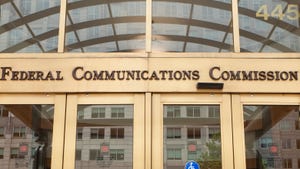Lack of mid-band spectrum could cost operators billions of dollars – GSMALack of mid-band spectrum could cost operators billions of dollars – GSMA
Policymakers are not making enough mid-band spectrum available for 5G and that could cost operators – and ultimately consumers – dear, the GSMA warned this week.
July 9, 2021

Policymakers are not making enough mid-band spectrum available for 5G and that could cost operators – and ultimately consumers – dear, the GSMA warned this week.
The industry body shared the results of a study carried out by Coleago Consulting that shows densely populated cities require on average 2 GHz of mid-band frequencies by the second half of this decade to provide reliable high-speed mobile broadband services.
The actual amount of mid-band spectrum required varies significantly by city, mid-band being roughly 1500 MHz-6 GHz. Population density, spread of base stations, availability of small cells and WiFi offload, and 5G activity levels, amongst other things, will have an impact on how much spectrum any given city needs.
Hong Kong tops the list of 36 cities studied by Coleago with an upper estimate of 3.7 GHz of mid-band spectrum required, while Tehran ranks at the bottom with a requirement of up to 1.2 GHz. As such, the amount of additional spectrum each city needs is also variable. However, the important message is that all cities need more spectrum than they are set to have, and the additional amount required is “far greater” than that currently planned for release, the GSMA said.
“Without the additional spectrum, it will be impossible to realise the full potential of 5G in some cases. In others, the number of antennas and base stations needed will lead to higher carbon emissions and consumer prices,” it warned.
It has taken a stab at quantifying the additional cost burden.
Assuming operators could densify their networks in order to address the spectrum shortfall, the total cost of networks would be three to five times higher over a 10-year period, if the deficit was somewhere between 800 MHz and 1 GHz, the report hypothesises. Thus the deployment cost could rise by anywhere between $782 million and $5.8 billion per city, it states, using Paris as an example of the lower end and Mexico City the higher.
And the GSMA also notes that densification to the required extent will not be possible in all cities, and that anyway it brings additional challenges, such as interference between base station sites that are closer together, which would require yet more spectrum to solve.
The implication, of course, is that the extra cost would be passed on to consumers, which is one way of getting policymakers to pay attention to your cause.
So, what does the mouthpiece of the mobile industry actually want? It’s pretty simple – more spectrum.
The purpose of the report is to enable it to put pressure on regulators to make an average of 2 GHz of mid-band frequencies available for mobile in the 2025-2030 timeframe, as 5G starts to go mass-market. This will enable the industry to meet the ITU’s speed targets for 5G, that is, 100 Mbps download speeds and 50 Mbps upload, it said.
It is also calling on policymakers to pay attention to increasing 5G usage and the additional needs of advanced 5G use cases when making decisions on frequencies, as well as taking into account real-world factors like population density, fibre availability (fixed wireless access will suck up spectrum in areas with limited fibre rollout), and so forth.
It also wants regulators to support harmonised mid-band 5G spectrum – within the 3.5 GHz, 4.8 GHz and 6 GHz ranges, for example – and to facilitate technology upgrades in existing bands.
The GSMA is setting out its stall in advance of the next World Radiocommunication Conference in 2023, which it describes as a crucial opportunity to align global policies for mid-band solutions for mobile.
“Coordinated regional decisions will lead to a WRC which enables the future of 5G and supports wider broadband take-up by increasing capacity and reducing costs,” the GSMA said.
We’ve heard a similar message before, and there will be more to come in the next couple of years.
About the Author
You May Also Like










.png?width=300&auto=webp&quality=80&disable=upscale)


_1.jpg?width=300&auto=webp&quality=80&disable=upscale)